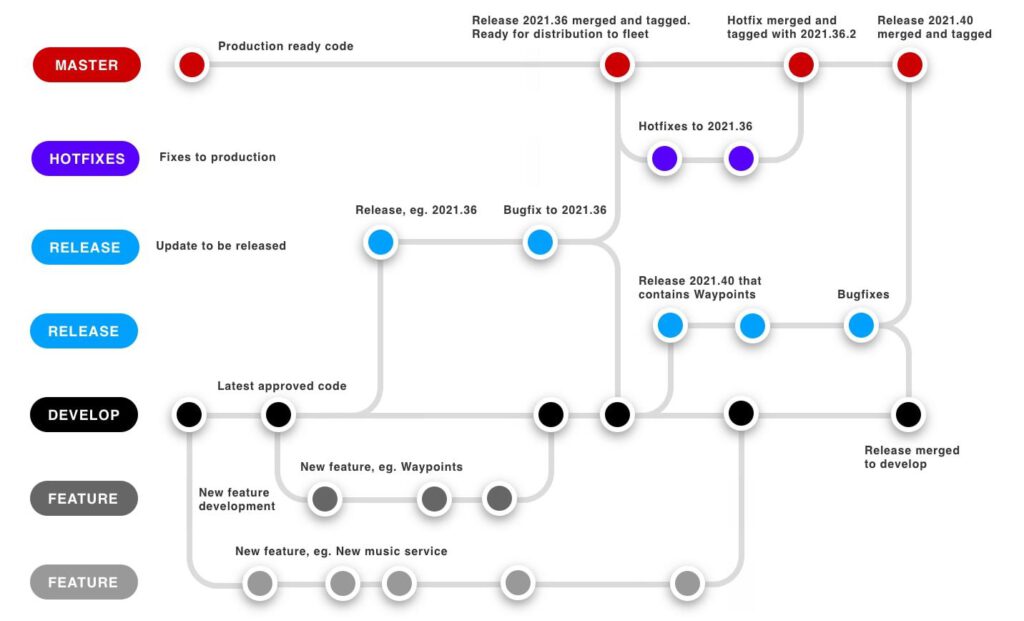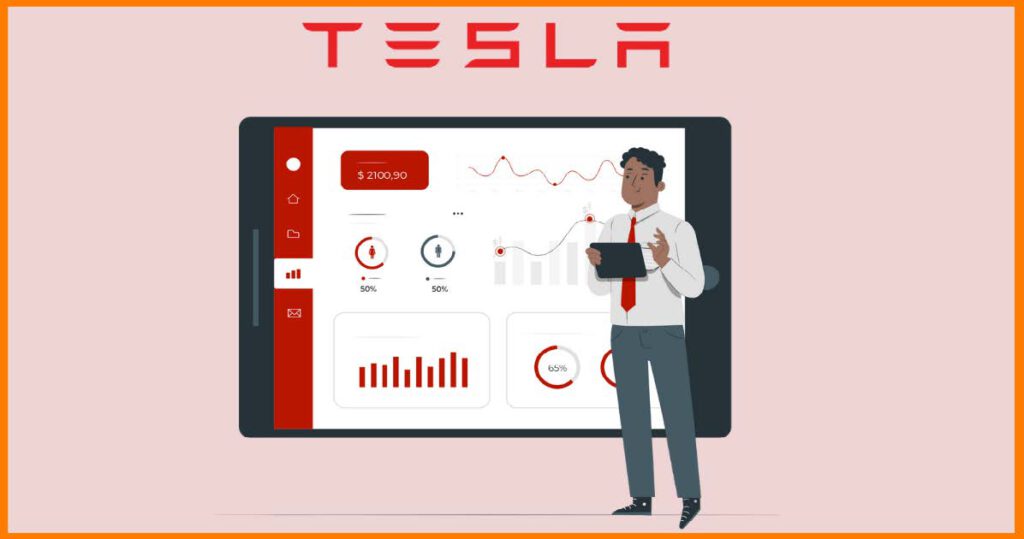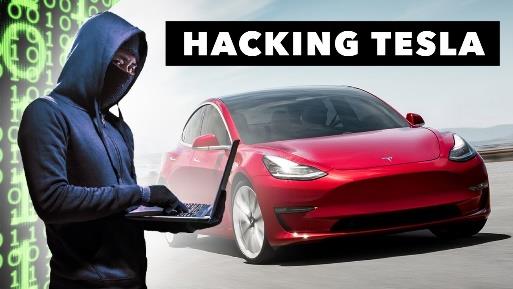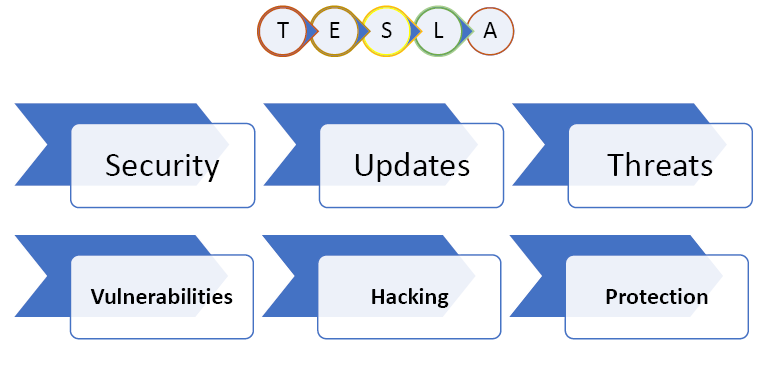Reader’s Discretion
While I strive to provide accurate and reliable information to the best of my abilities, I am not responsible for the truth or accuracy of the content. The information provided is solely for educational or informational purposes and should not be relied upon as a substitute for professional advice or expert opinion. It is ultimately the responsibility of the reader to verify and confirm the accuracy and validity of the information provided. The author cannot be held liable for any inaccuracies or errors in the content.
Tesla electric cars
Tesla electric cars have become increasingly popular over the past few years thanks to their unique features, such as the electric motor, OTA updates, and advanced safety systems. However, as with any connected device, there is always a risk of cybersecurity threats. In this article, we will explore how the electric motor works in Tesla vehicles, how Tesla updates its cars, and what can be done remotely while taking over a Tesla vehicle. We will also explore the potential security risks associated with Tesla vehicles and how owners can protect themselves.
Electric Motor in Tesla Vehicles:
Tesla vehicles use an electric motor instead of a traditional combustion engine to power the wheels. The electric motor has three main components: the stator, the rotor, and the power electronics. The stator is a stationary motor part containing copper windings. The rotor is a rotating part of the motor that has magnets. The power electronics convert the direct current (DC) from the battery into alternating current (AC) that powers the motor.
When the driver presses the accelerator pedal, the power electronics convert the DC from the battery into AC that flows through the stator’s copper windings, creating a magnetic field. The magnetic field attracts the magnets in the rotor, causing it to rotate and turn the wheels.
The Tesla electric motor’s stator comprises three phases of copper windings, which create a magnetic field that interacts with the magnets in the rotor. The power electronics in the Tesla electric motor include an inverter that converts the DC from the battery into AC, which is used to power the motor.
Tesla Updates:
Tesla updates its cars through over-the-air (OTA) updates. OTA updates are similar to software updates on a smartphone or computer. They allow Tesla to add new features, fix bugs, and improve performance without the need for the owner to take the car to a service center. OTA updates are also used to address security vulnerabilities.
Over-the-air (OTA) is a technology that allows Tesla to update its vehicles’ software wirelessly, without the need for owners to bring their cars to a service center. OTA updates are a critical component of Tesla’s business model, allowing the company to continually improve its cars’ functionality, add new features, and address security vulnerabilities.
How OTA Updates Work:
Tesla OTA updates work similarly to updates for other devices, such as smartphones and computers. When an update is available, Tesla sends a notification to the vehicle’s owner, who can install the update immediately or schedule it later.
To install the update, the vehicle’s software connects to Tesla’s servers over a secure network, downloads the update, and installs it on the car’s systems. The process typically takes about 30 minutes, during which time the vehicle cannot be driven.

Security Vulnerabilities of OTA Updates:
While OTA updates are a convenient way to keep Tesla vehicles up-to-date and secure, they expose the car to several security vulnerabilities that attackers could potentially exploit. Some of the most significant security vulnerabilities of OTA updates are:
- Malware Injection: One of the most significant security risks associated with OTA updates is the possibility of malware injection. If an attacker can gain access to the update process, they could inject malicious code into the update, compromising the car’s systems and allowing the attacker to take control of the vehicle remotely.
- Man-in-the-Middle Attacks: Another potential security risk associated with OTA updates is man-in-the-middle (MITM) attacks. If an attacker can intercept the communication between the car and Tesla’s servers, they could potentially modify the update or inject malicious code into the update.
- Insider Threats: Insider threats are another potential security risk associated with OTA updates. If an employee or contractor with access to Tesla’s systems were to inject malicious code into an OTA update deliberately, they could potentially compromise the security of thousands of Tesla vehicles.
- Rollback Attacks: Rollback attacks are a potential security risk associated with OTA updates. If an attacker can gain access to a previous version of the car’s software, they could force the car to roll back to that version, potentially reintroducing vulnerabilities that had been fixed in the latest update.
Protecting Against OTA Update Security Vulnerabilities:
To protect against the security vulnerabilities associated with OTA updates, Tesla implements a range of security measures, including:
- Encryption: Tesla uses encryption to protect the communication between the car and Tesla’s servers, which makes it more difficult for attackers to intercept or modify the update.
Tesla uses various encryption mechanisms to ensure the security and integrity of the software updates delivered over the air (OTA) to its vehicles. These mechanisms are designed to protect against potential threats, such as unauthorized access, interception, modification, or corruption of the updated data in transit.
One of the encryption mechanisms Tesla uses for OTA updates is Advanced Encryption Standard (AES) 256-bit encryption, a widely used encryption algorithm that provides robust security and performance. AES 256-bit encryption uses a symmetric key algorithm, which means that the same key is used for both encryption and decryption of the data.
In addition to AES encryption, Tesla uses other security mechanisms to protect OTA updates, such as code signing and secure boot. Code signing involves digitally signing the update packages with a private key, which ensures that the updates are authentic and have not been tampered with. Secure boot involves verifying the digital signature of the update package before the update is installed, which ensures that only authorized updates are installed on the vehicle.
Tesla also uses various other security measures to protect against potential security threats during the update process, such as secure communication protocols, access controls, and monitoring and logging mechanisms. These measures help ensure that the update process is secure, reliable, and transparent and that potential security issues are quickly identified and addressed.
Overall, using robust encryption mechanisms and other security measures helps ensure the security and integrity of the software updates that Tesla delivers to its vehicles, which is essential for maintaining the safety and functionality of its vehicles. - Digital Signatures: Tesla uses digital signatures to ensure the OTA update is genuine and has not been tampered with.
- Two-Factor Authentication: Tesla uses two-factor authentication to protect its systems from unauthorized access by employees or contractors.
- Code Review: Tesla reviews its code regularly to ensure that there are no vulnerabilities that attackers could exploit.
Tesla uses a layered approach to security.
Tesla uses a layered approach to security, with different security measures in place at different levels of the car’s systems.
Tesla uses a layered approach to security, which includes different security measures at various levels to protect against potential security threats. Here are the different layers of security that Tesla employs:
- Physical Security: Tesla takes physical security seriously and employs several measures to protect its facilities, including security cameras, access control systems, and security personnel. Tesla
also uses secure transportation methods for its products and materials to prevent theft or tampering. - Network Security: Tesla’s network security includes firewalls, intrusion detection and prevention systems, and other
security measures to protect its networks from unauthorized access and attacks. - System Security: Tesla uses secure software development practices and employs system security measures to protect its systems from potential vulnerabilities and attacks. This includes regular software updates, encryption, digital signatures, and code review.
- User Authentication and Authorization: Tesla requires strong authentication and authorization to access its systems and services. This includes using two-factor authentication and access controls to ensure only authorized users can access Tesla’s systems.
- Application Security: Tesla employs security measures to protect its web and mobile apps from potential vulnerabilities and attacks. This includes regular code review, penetration testing, and secure development practices.
- Data Protection: Tesla uses encryption and other data protection measures to protect sensitive data, including customer information and intellectual property.
- Incident Response: Tesla has a robust incident response plan in place to respond quickly to security incidents and minimize their impact.
Tesla also conducts regular security audits and risk assessments to identify potential security threats and vulnerabilities and takes necessary measures to mitigate them.
Tesla conducts regular security audits and risk assessments to identify potential security threats and vulnerabilities and takes necessary measures to mitigate them. The frequency and scope of these assessments can vary depending on the nature of the system, application, or service being assessed.
Regular security audits and risk assessments
Some of the regular security audits and risk assessments that Tesla may conduct include:
- Penetration Testing: Tesla may conduct penetration testing to identify vulnerabilities in its systems, applications, or networks. Penetration testing involves attempting to exploit vulnerabilities in a controlled manner to identify potential security weaknesses that attackers could exploit.
There have been several reported instances of successful Tesla car hacking in recent years, with researchers and hackers demonstrating various methods of taking control of Tesla vehicles. One of the most well-known cases of Tesla car hacking is the 2018 Pwn2Own hacking contest, where Chinese researchers successfully hacked into a Tesla Model S and took complete control of the vehicle’s systems.
During the Pwn2Own contest, the researchers used a combination of vulnerabilities to access Tesla’s systems, including a “CAN bus” hack, which involved exploiting vulnerabilities in the Controller Area Network (CAN) bus, a critical component of modern vehicle systems. The researchers used this vulnerability to gain access to the vehicle’s infotainment system, allowing them to take control of the vehicle’s brakes, steering, and other systems.
The researchers notified Tesla of the vulnerabilities they found, and Tesla released a software update to fix the issues. This is an example of how Tesla uses a layered approach to security and quickly responds to potential security threats by releasing software updates to fix vulnerabilities.
There have also been other reported instances of Tesla car hacking, including a 2019 hack by a team of Belgian researchers, who were able to remotely unlock a Model S using a wireless key fob spoofing attack. Tesla released a software update to address this vulnerability as well.
In response to these and other potential security threats, Tesla has implemented various security measures to protect its vehicles and systems from potential attacks. These measures include regular software updates, over-the-air updates, and other security measures to protect against potential vulnerabilities and attacks.
Tesla also operates a bug bounty program, which encourages researchers and hackers to report potential security vulnerabilities in its products and services in exchange for rewards. This program helps Tesla identify and address potential security issues in a timely manner, further enhancing the security of its vehicles and systems. - Code Review: Tesla may conduct regular code reviews to identify potential security vulnerabilities in its software. Code review involves examining the codebase for security weaknesses and other issues attackers could exploit.
- Risk Assessments: Tesla may conduct regular risk assessments to identify potential security threats and vulnerabilities across its systems, applications, and networks. Risk assessments involve identifying and prioritizing potential security risks and developing strategies to mitigate those risks.
- Compliance Audits: Tesla may conduct regular compliance audits to ensure that its systems, applications, and processes are in compliance with relevant laws, regulations, and industry standards. Compliance audits can help identify potential security gaps or weaknesses that may need to be addressed.
Compliance
As a manufacturer of electric vehicles, Tesla is subject to various regulatory requirements and certifications at the federal, state, and international levels. Here are some of the key compliance and certification requirements that Tesla needs to meet:

- Federal Motor Vehicle Safety Standards (FMVSS): The National Highway Traffic Safety Administration (NHTSA) sets FMVSS regulations for motor vehicles sold in the United States, which cover a wide range of safety-related requirements, such as crashworthiness, lighting, and brakes. Tesla must comply with these standards to sell its vehicles in the United States.
- Environmental Protection Agency (EPA) regulations: The EPA sets emissions and fuel efficiency standards for motor vehicles sold in the United States, including electric vehicles. Tesla must meet these standards to sell its vehicles in the United States.
- California Air Resources Board (CARB) regulations: California, which is Tesla’s largest market, has its own set of emissions standards that are even more stringent than federal standards. Tesla must meet CARB’s requirements to sell its vehicles in California.
- European Union (EU) regulations: Tesla must comply with EU regulations for emissions, safety, and other requirements to sell its vehicles in the European Union.
- International Electrotechnical Commission (IEC) standards: IEC sets international electrical, electronic, and related technologies standards. Tesla must meet these standards for its vehicles to be sold in many countries around the world.
- ISO 26262 functional safety standard: ISO 26262 is a standard for functional safety in automotive systems, which is increasingly important as vehicles become more autonomous and rely more on software and electronics. Tesla must demonstrate compliance with this standard for its vehicles to be sold in many markets.
- Payment Card Industry Data Security Standard (PCI DSS): Tesla also needs to comply with the PCI DSS standard, which is required for any company that processes credit card payments. This is relevant for Tesla’s Supercharger network and the payment processing that takes place there.
Meeting these regulatory requirements and certifications is essential for Tesla to sell its vehicles and operate its business legally and responsibly. Tesla’s dedicated compliance team ensures that the company meets all relevant standards and requirements.
Tesla may conduct these assessments on a regular basis, such as annually or bi-annually, or on an ad hoc basis as needed based on changes to the system, application, or network being assessed. Tesla also encourages its employees and customers to report any potential security issues through its bug bounty program, which can help identify and address security vulnerabilities in a timely manner.
Tesla encourages responsible disclosure of any security vulnerabilities found in its products and services through its bug bounty program, which rewards individuals who report potential security issues.
Overall, Tesla’s layered approach to security and its commitment to protecting its customers and intellectual property from potential threats are critical to the company’s success in the automotive industry.
Over The Air (OTA) Security
OTA updates are signed with cryptographic keys, which verify that the updates come from Tesla and have not been tampered with. Tesla also uses encryption to protect the data that is transmitted during OTA updates.
Tesla vehicles are equipped with a suite of sensors and cameras that are used to gather data about the vehicle’s surroundings. The vehicle’s autopilot system uses this data to make decisions about how to control the vehicle. OTA updates are used to update the software that controls the autopilot system, enabling it to learn and adapt to changing conditions on the road.
Tesla updates its cars frequently, with new features and improvements being added on a regular basis. In addition to OTA updates, Tesla also releases software updates that can be downloaded and installed on a USB drive.
Taking Over a Tesla Vehicle:
While Tesla has implemented numerous security measures to prevent unauthorized access to its vehicles, there have been instances where security researchers have successfully taken over a Tesla vehicle remotely.

The most common method used to take over a Tesla vehicle remotely is through a vulnerability in the car’s software. Once a vulnerability is identified, an attacker can exploit it to gain access to the car’s systems. From there, an attacker could potentially take control of the car’s steering, brakes, and acceleration.
To prevent unauthorized access to Tesla vehicles, owners should ensure they have installed the latest OTA updates. They should also be wary of connecting their cars to unsecured Wi-Fi networks and avoid installing third-party apps or modifications on their vehicles.
Security Risks Associated with Tesla Vehicles:
Tesla vehicles are not immune to cybersecurity threats. As with any connected device, there is always a risk of vulnerabilities and attacks. Here are some of the security risks associated with Tesla vehicles:
- Remote Exploitation: As mentioned earlier, security
researchers have successfully taken over Tesla vehicles remotely by exploiting vulnerabilities in the car’s software. This attack could potentially allow an attacker to take control of the car’s steering, brakes, and acceleration. - Physical Access: Physical access to the car is another potential security risk. If an attacker gains physical access to the vehicle, they could potentially install malware or make unauthorized modifications to the car’s systems.
- Unsecured Networks: Tesla vehicles are designed to connect to Wi-Fi networks, which could potentially be a security risk. If an owner connects their car to an unsecured network, an attacker could potentially intercept the data transmitted between the car and the network.
- Third-Party Apps: Tesla vehicles allow third-party apps to be installed on the car’s infotainment system. While these apps are vetted by Tesla, there is always a risk that a malicious app could be installed on the car.
Protecting Tesla Vehicles from Cybersecurity Threats:
To defend their Tesla vehicles from cybersecurity threats, owners should take the following steps:
- Keep OTA Updates Up to Date: OTA updates are essential to ensure the car’s software is up-to-date and free from known vulnerabilities. Owners should ensure that their vehicles are configured to receive OTA updates automatically.
- Connect to Secure Networks: Owners should only connect their Tesla vehicles to secure Wi-Fi networks that are password-protected and encrypted.
- Avoid Installing Third-Party Apps: While Tesla allows third-party apps to be installed on the car’s infotainment system, owners should avoid installing apps from untrusted sources.
- Use Two-Factor Authentication: Two-factor authentication can add an extra layer of security to the Tesla account, which is used to manage the car’s settings and access OTA updates.
Conclusion:
In conclusion, Tesla’s over-the-air (OTA) update system provides a convenient and efficient way to deliver software updates and new features to its vehicles. However, as with any technology that relies on the internet, the OTA system also exposes Tesla vehicles to potential security threats and vulnerabilities.
To protect against these threats, Tesla employs multiple layers of security, including strong encryption, code signing, and secure boot mechanisms. Tesla also conducts regular security audits and risk assessments to identify and address potential vulnerabilities.
Despite these measures, there is always a risk of security vulnerabilities in any system. Therefore, Tesla owners should remain vigilant and protect their vehicles from potential threats, such as keeping them up to date with the latest security patches and software updates, using strong passwords and two-factor authentication, and being aware of signs of suspicious activity.
Tesla’s commitment to security and ongoing efforts to identify and address potential vulnerabilities demonstrate a solid commitment to protecting its customers and their vehicles’ safety and security. While no system can ever be completely free of security risks, Tesla’s robust security measures and proactive approach to security provide high protection for its customers and their vehicles.

